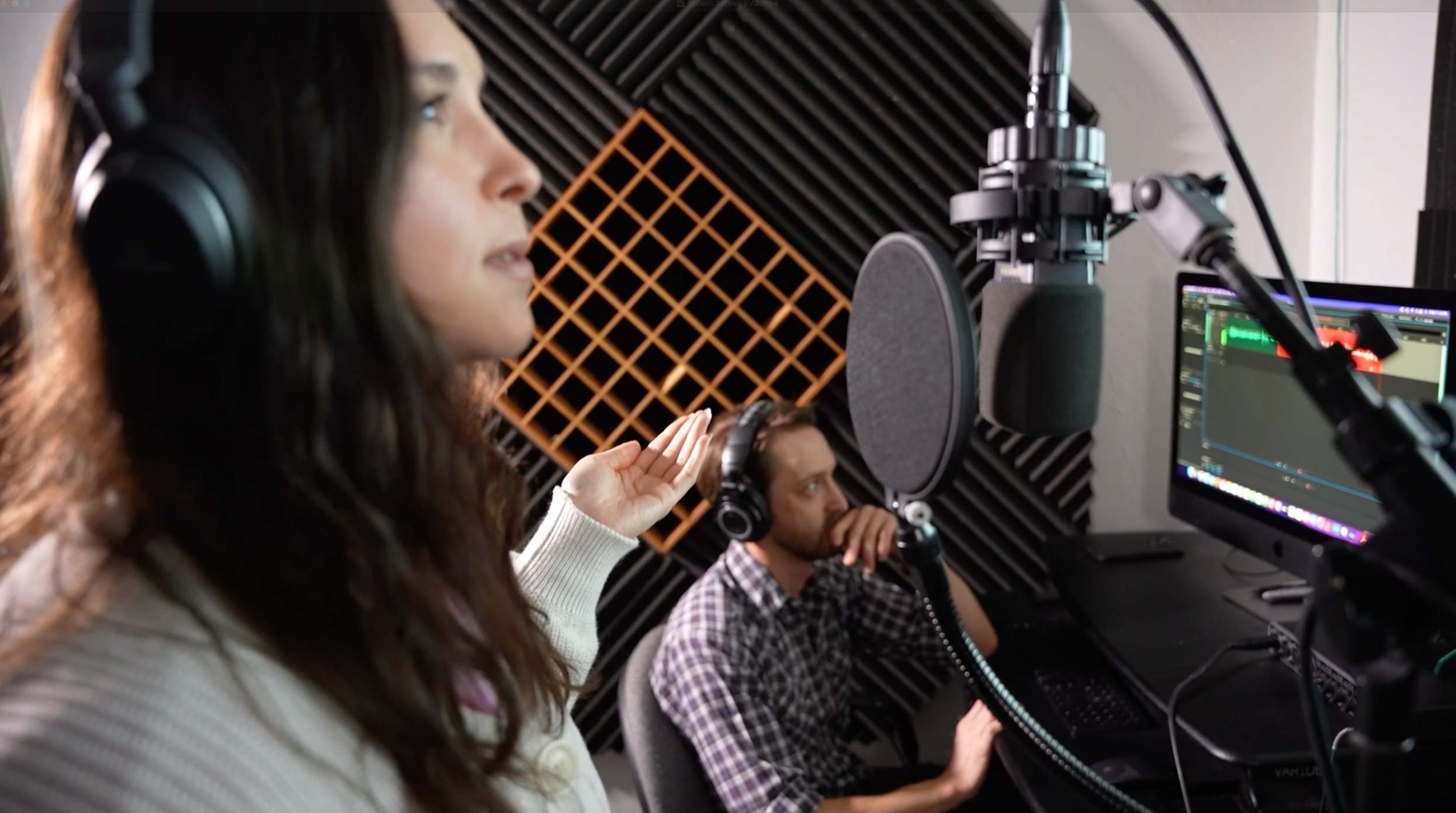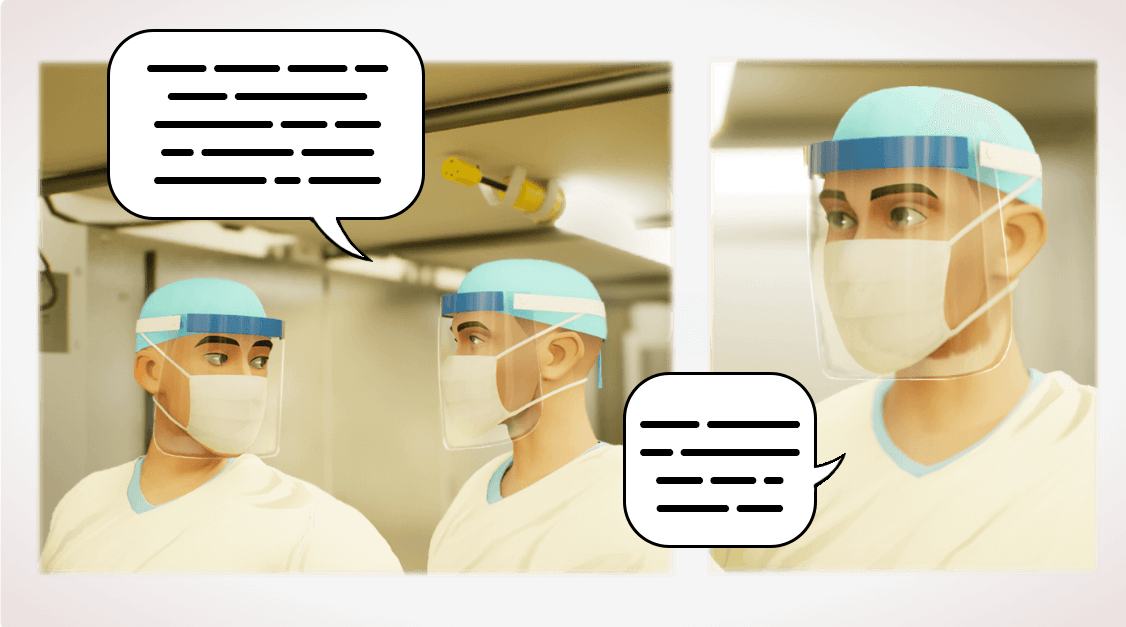
It’s no secret that thoughtful audio design and voice-overs are crucial to crafting engaging e-learning courses. According to ReadSpeaker.com, voice-overs can:
- Improve learners’ retention
- Enhance digital accessibility
- Help broaden an audience
- Help comply with regulations, such as Web Content Accessibility Guidelines, WCAG 2.2
- Create a better experience for the learner
With this in mind, it’s important for companies to monitor any changes in the voice acting industry, an industry that is in flux due to the rise of AI-integrated voice-over tools.
Virginie Bergner of Forbes reported that the voice acting market’s value is projected to reach $5.2 billion by 2027, but the way that money is distributed is changing due to AI’s impact.
“Industry experts project a potential 30-50% reduction in traditional voice acting jobs within the next decade, as AI-generated voices become more sophisticated and cost-effective,” Berger wrote. “This shift could translate to a $1.5-$2.5 billion market transformation, with funds redirecting from actor salaries to AI development and licensing.”
AI’s ability to replicate human-like voice performances is not only changing the market, but it’s also changing why and when companies choose to record original voice performances.
Brian Gililland, KeyBridge Audio Operations Coordinator, said AI is an imperfect tool in many instances.
Gililland, who has over 15 years of voice acting experience, said AI can struggle replicating the nuance of human performances.
“AI can be very limited in its ability to capture emotion, emphasis of words, and pronunciation without having to really play with your prompts until you get it just right,” Gililland said. “I'm sure as the technology advances, those issues will be addressed, but there is something to be said for having the ability to direct a human performer.”
For Gililland, the difference between AI-replicated voice performances and using real actors is the difference between good and great performances.
“[A director can provide quick guidance to a talented voice actor] that will give you exactly what you want out of the performance rather than ‘close enough,’” Gililland said.
Furthermore, Gililland said AI may also lack the ability to surprise audiences with original takes.
“In the case of character performances like in cartoons, human actors bring a creativity and originality that would be extremely difficult to replicate with AI, no matter how advanced the tech,” Gililland said. “Imagine trying to get AI to come up with Mark Hamill's Joker or Mel Blanc's Bugs Bunny.”
SAG-AFTRA, a union that represents approximately 160,000 media professionals worldwide, recently signed an agreement with Narrativ, an AI startup. Narrativ relies on AI-replicated voices to create audio ads and, according to the agreement, SAG-AFTRA members can now license their digitized voices to the company for this purpose.
Gililland sees the landscape shifting, though he doesn’t necessarily think AI tools are suitable for every project.
“For narration and first draft concept pitches, I think AI will definitely rule supreme,” Gililland said. “For true back-and-forth dialogue, I think humans will be the most reliable for the best results. Ultimately, it comes down to what's the most cost-effective and has the best results, which will rely heavily on a project-by-project basis.”
With so many unknowns surrounding AI tools, audio professionals at KeyBridge can agree on one thing: It’s important to investigate any potential benefits if these tools can help clients save money.
Hannah Jamil, who spent five years as the KeyBridge Audio Operations Coordinator, discussed a few key benefits to using AI that make it a strong alternative to traditional voice acting.
“If you live and operate in a rural area, finding local talent that have specific requirements such as accents, ethnicity, and age is not always easy or feasible,” Jamil said.
Jamil noted that hiring out-of-market actors is helpful when companies cannot secure local talent, but relying on remote voice actors presents its own set of challenges.
“…when developing for a production or product, hiring voice actors that use different equipment and have different setups and tonal delivery can result in extra work for the editors to clean up,” Jamil said.
Jamil said editors compiling varied performances often struggle to make their final products sound as if all of the actors are in the same room at the same time. Jamil believes AI tools can help editors even out the quality of these performances across multiple voice options.
New AI tools will also make it easier to update products without having to perform costly rerecords.
"... professionals in instructional design and technology see this as an opportunity to help bridge the gap between having a final product that can’t be updated versus having a final product that can evolve and be changed by the client [with AI-integrated] authoring tools…” Jamil said.
Jamil believes these tools will give the client the ability to make changes in the future without additional help.
Not matter what lies ahead, KeyBridge is staying ahead of the curve and monitoring emerging trends in AI to ensure that our solutions align with our clients' evolving visions.
Pros:
- AI tools are cost-efficient.
- AI tools help maintain consistent sound quality across different voice options.
- AI tools remove geographical and equipment limitations.
- AI tools make it easier to update and maintain the final product.
- AI tools create a better experience for the user.
Cons:
- AI tools are disconnected from the human element.
- AI-replicated performances may not be as nuanced as human voices.
- AI tools rely on prompts instead of human direction.
- AI tools may limit creativity.




